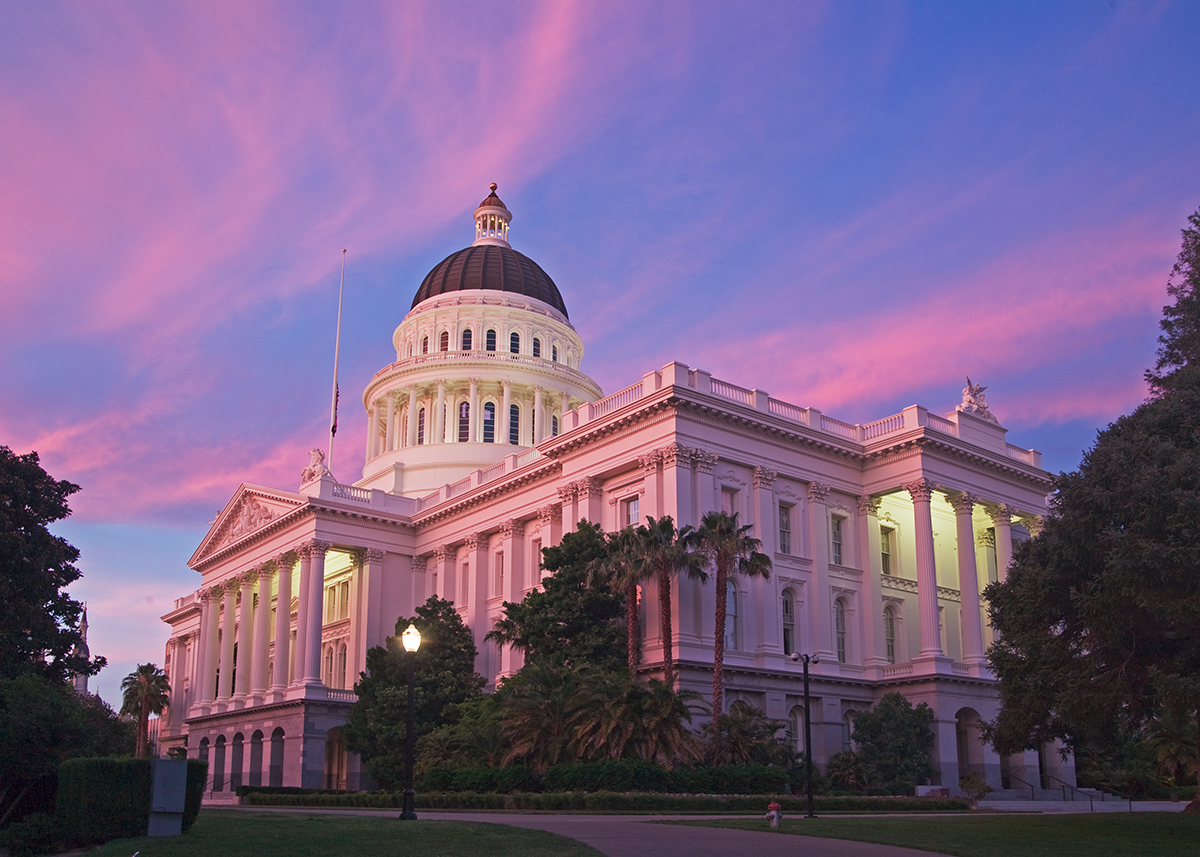By Kristy Wiese
Legislative Advocate

The 2021 California legislative session adjourned on Sept. 10, with the Legislature sending 835 bills to the Governor's desk for action — from police reform, housing, and climate change to increased access to health care, employment practices and affordable college. The state’s multi-billion-dollar surplus motivated many of these proposals, including a wildfire spending plan, broadband infrastructure and childcare access and affordability. Other legislative priorities failed, including a vaccine mandate and COVID-19 supplemental paid sick leave. Ultimately, Governor Newsom signed 769 bills into law and vetoed 66 bills.
As the Legislature wrapped up the 2021 session, the primary focus in September was the recall against Governor Newsom. He easily defeated the recall by nearly a 2:1 margin and the race was called by 9 p.m. on the night of the election. Republican radio host Larry Elder, the top vote getter among the opposing candidates, conceded the race but said, “stay tuned,” suggesting he may run again – possibly against Newsom in 2022. The more moderate Republicans in the race to oust Newsom did not perform well, including former San Diego Mayor Kevin Faulconer.
When the dust from the recall settled, Governor Newsom refocused on acting upon the bills that were approved by the Legislature before the Oct. 10 deadline. Below are the outcomes of bills supported by CANP this year. Note: 2021 is the first year of a two-year session. This means that certain bills that did not pass this year, including AB 852 (Wood), the “Clean-up” bill for AB 890, will be eligible to be considered in 2022.
AB 369 (Kamlager), which will require the State Department of Health Care Services to implement a program of presumptive Medi-Cal eligibility for persons experiencing homelessness and require the department to authorize an enrolled Medi-Cal provider to issue a temporary Medi-Cal benefits identification.
Outcome: Signed by the Governor
SB 65 (Skinner), which will require comprehensive investigations into maternal and infant mortality and morbidity, improve data collection and research on socio-economic factors that contribute to negative birth outcomes, expand postpartum health care for parents and babies, and improve access to health options like doulas and midwives.
Outcome: Signed by the Governor
SB 306 (Pan), which names the prescribing of antibiotics to the sexual partner of a patient diagnosed with an STD as “expedited partner therapy” or “EPT” and requires health care providers to include EPT on a prescription if they are unable to obtain the name of the patient’s sexual partner. It also allows pharmacists to dispense the prescription without a name on the label if the prescription includes “EPT.”
Outcome: Signed by the Governor
SB 365 (Caballero), which mandates Medi-Cal reimbursement for E-consult services provided by Medi-Cal providers.
Outcome: Vetoed by the Governor
SB 380 (Eggman), which reduces certain administrative barriers under the End of Life Option Act and deletes the Act’s sunset date.
Outcome: Signed by the Governor
CANP continues to work with the California Board of Registered Nursing (BRN) on the implementation of AB 890. The Nurse Practitioner Advisory Committee (NPAC) held meetings in late August and September to hear and discuss recommendations from the three NPAC subcommittees on the three segments of AB 890 that will be regulated: the transition to practice, NPs in transition to independent practice, and NPs practicing independently. The NPAC voted to recommend minimum standards for the transition to independent practice under AB 890 that include training and national certification in the NP’s area of clinical independent practice; an exemption clause for experienced NPs; 4,600 minimum hours of practice; and mentorship by an NP or MD colleague in the NP’s specific area of expertise. With respect to NPs practicing independently, the NPAC discussed whether the number of years required for DNPs to practice independently be reduced from three years to one year, making the total years four rather than six (after completing the three years required pursuant to BPC 2837.103 for NPs in transition). After much discussion, the NPAC voted to reduce clinical hours required for DNPs based on the direct patient care hours that the DNP completed in their DNP program.
With respect to timing of the AB 890 regulations, BRN staff have stated that their goal is to present draft AB 890 regulations to the BRN at the Nov. 17-18 board meeting. If the draft regulations aren’t ready at that point, the BRN will hold a special board meeting before the end of the year, at which point the regulations will be presented
On a broader scale, the COVID-19 delta variant and the unsuccessful effort to recall Newsom have dominated the environment in Sacramento. On Sept. 23, Newsom released a COVID-19 Action Plan that outlined the state’s efforts to immediately begin administering booster doses and readiness to administer vaccines to Californians under age 12. The state estimates it will need to administer an extra 63 million doses by the end of 2022, assuming approval of initial shots for children under 12 and boosters for everyone. Nearly 12 million residents are not vaccinated or not fully vaccinated. Despite the current surge, as of Sept. 26, California had the lowest seven-day death rate nationally and the lowest rate since January, according to data from the CDC.
The Legislature will reconvene from interim recess on Jan. 3, 2022. CANP continues to advocate for NPs and their patients and remains focused on the successful implementation of AB 890.